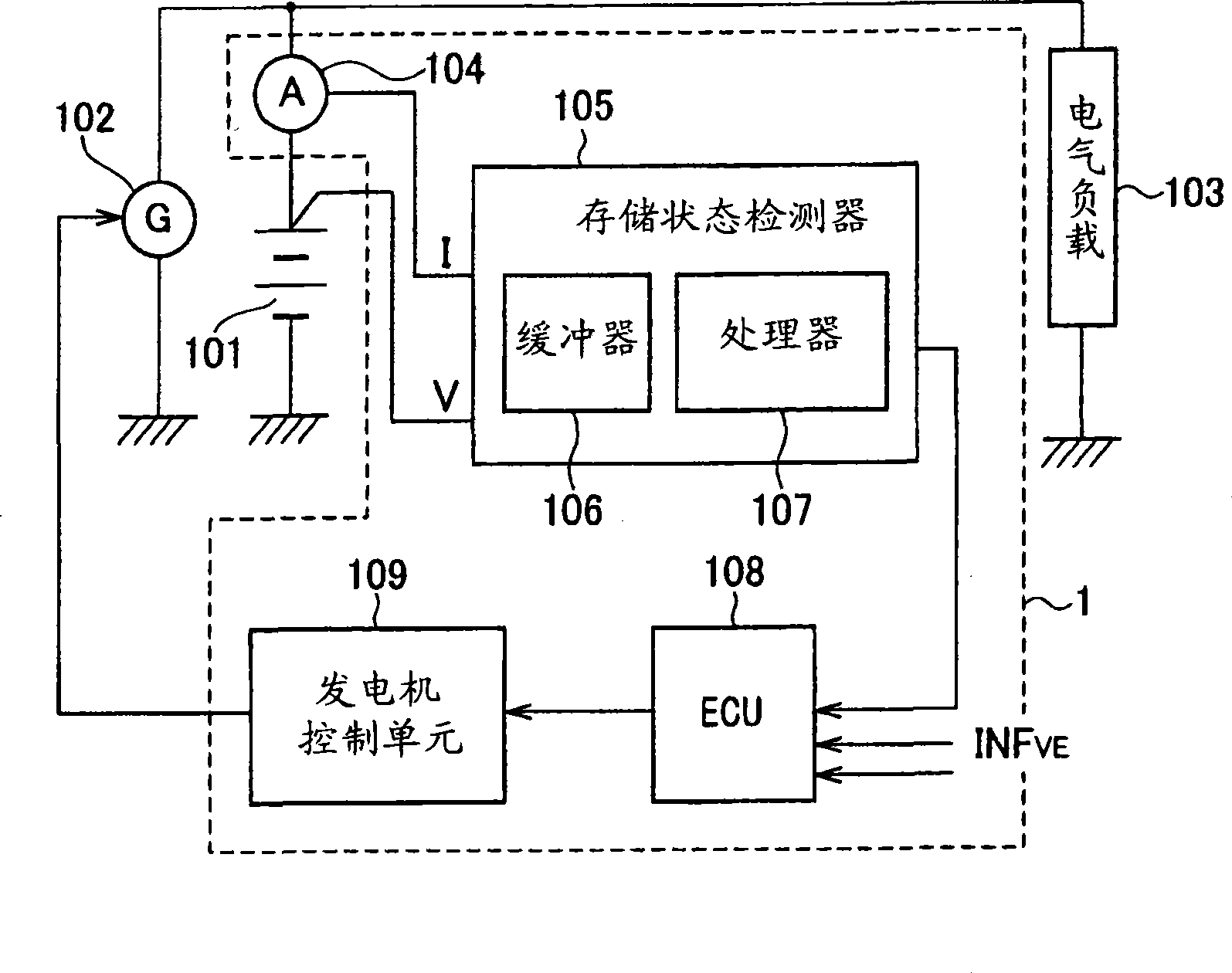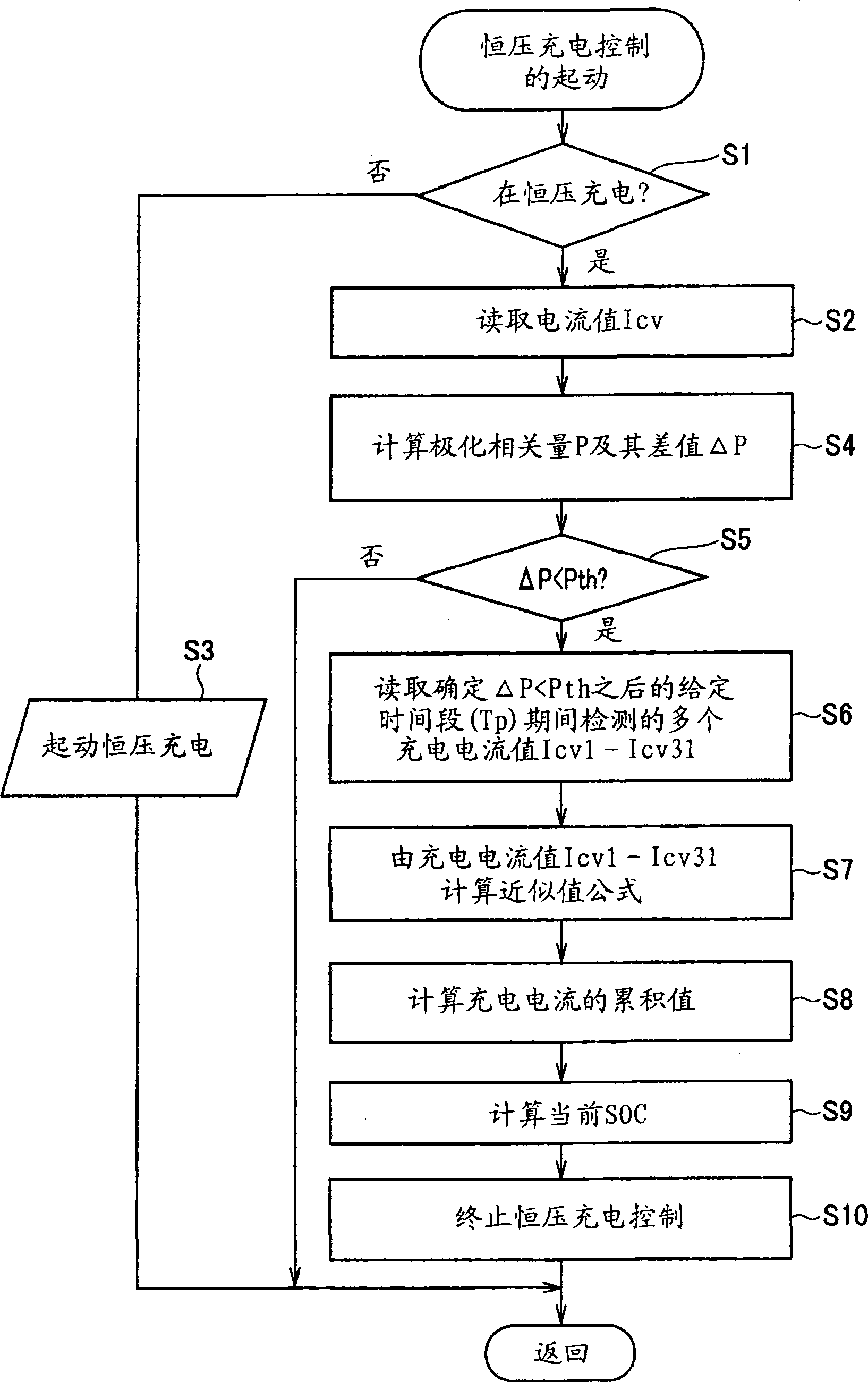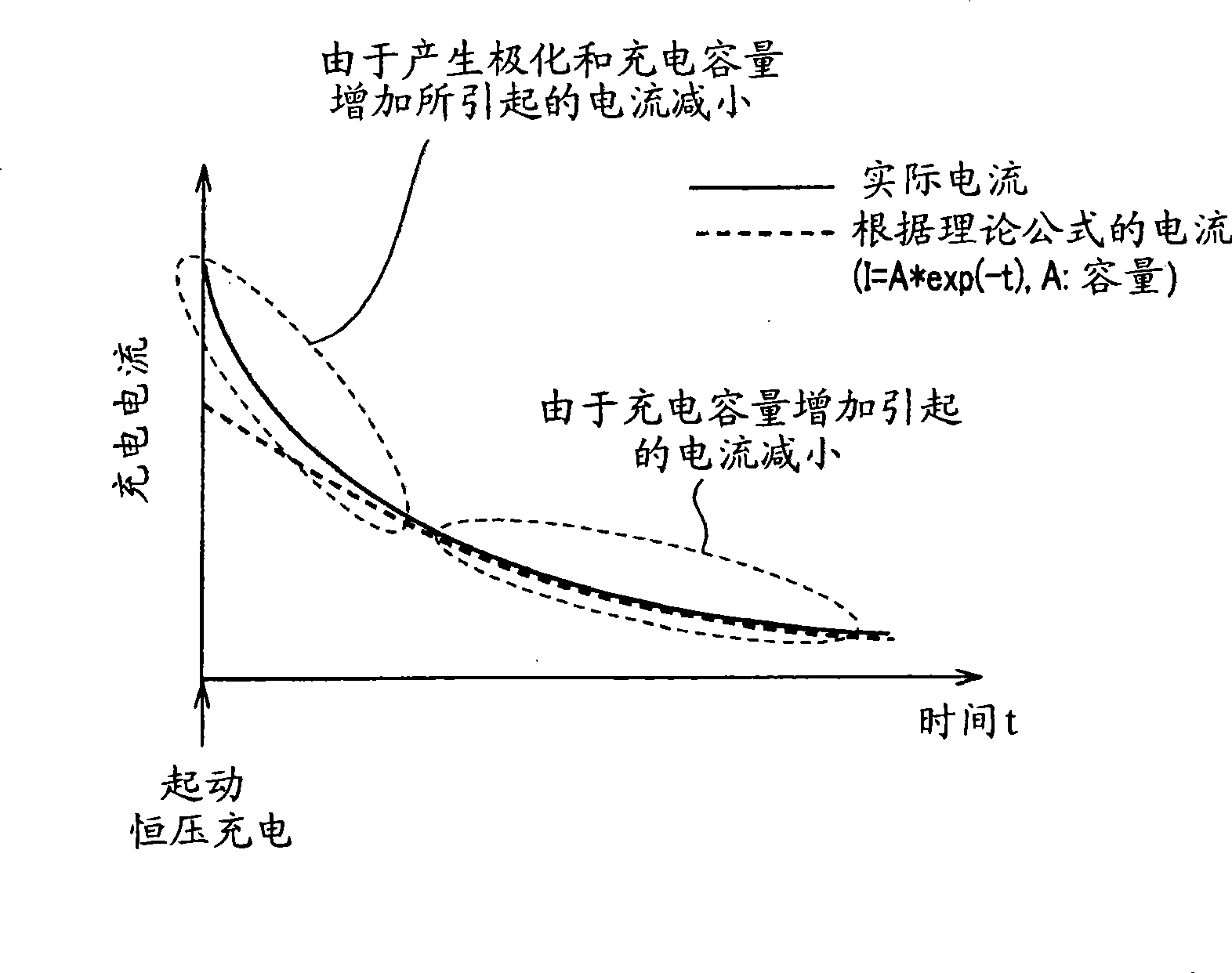Method and apparatus for detecting internal electric state of in-vehicle secondary battery
A battery and charging device technology, applied in battery circuit devices, measuring devices, circuit devices, etc., can solve problems such as inaccurate estimation
- Summary
- Abstract
- Description
- Claims
- Application Information
AI Technical Summary
Problems solved by technology
Method used
Image
Examples
no. 1 example
[0025] Reference attached Figure 1-5 , the first embodiment of the present invention will now be described. In this embodiment, the detection device according to the invention is implemented as an SOC (state of charge) calculation device for an in-vehicle battery.
[0026] attached figure 1 A block diagram of the SOC calculation device 1 is shown.
[0027] The SOC computing device 1 is installed in a vehicle, and the device 1 is electrically connected to a storage device in the vehicle (referred to here as a battery (rechargeable or accumulator)), an in-vehicle generator 102 (vehicle) driven by a vehicle engine (not shown) internal AC generator, that is, an alternator), and an electrical load 103 installed in the vehicle. The generator 102 is made as a field coil type generator. The electrical load 103 is powered by the battery 101 .
[0028] The battery 101 is a storage battery composed of a lead-acid battery, a nickel-metal hydride battery or a lithium battery. Any ty...
no. 2 example
[0070] Reference attached Figure 6-8 , a second embodiment of the detection device according to the invention will now be described.
[0071] As in the first embodiment, in the second embodiment, the detection means is realized as the SOC calculation means for the in-vehicle battery. In addition, for simplicity of description, elements similar or identical to those of the SOC computing device in the first embodiment still use the same reference numerals.
[0072] In addition to processor 107 based on the attached Figure 6 In addition to the flow chart shown in the work, the hardware structure of the SOC computing device and the attached figure 1 The device 1 described is the same. In addition, steps S11-S16 are the same as steps S1-S6. Among these steps, if the determination is YES in step S15, the processor 107 assumes that the polarization has completely disappeared, and proceeds to step S16. As in the aforementioned first embodiment, in this step, the processor 107 r...
PUM
 Login to View More
Login to View More Abstract
Description
Claims
Application Information
 Login to View More
Login to View More - R&D Engineer
- R&D Manager
- IP Professional
- Industry Leading Data Capabilities
- Powerful AI technology
- Patent DNA Extraction
Browse by: Latest US Patents, China's latest patents, Technical Efficacy Thesaurus, Application Domain, Technology Topic, Popular Technical Reports.
© 2024 PatSnap. All rights reserved.Legal|Privacy policy|Modern Slavery Act Transparency Statement|Sitemap|About US| Contact US: help@patsnap.com










